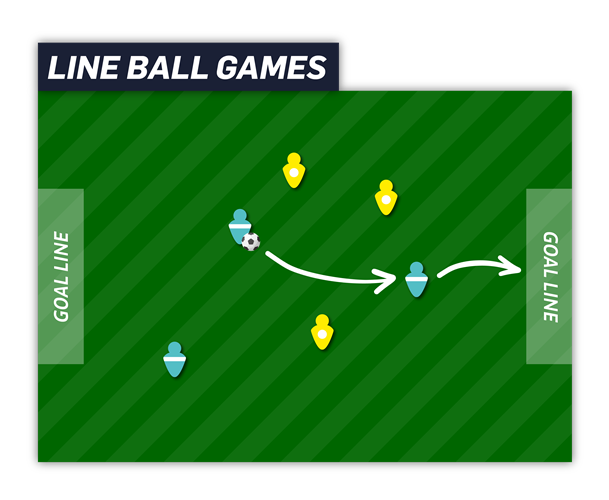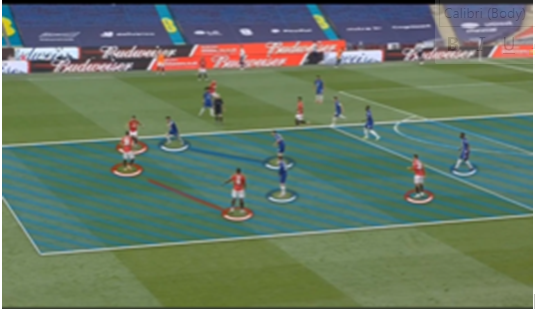In this blog, The FA’s coach development officer, Sarah Lowden discusses how line ball games can be used, how they can be adapted, and the benefits and returns of these types of practices.
What is it?
A line ball game takes place in an area of space, for a given number of players, where the focus for the players is to get the ball onto or over a line to score. This can be adapted or constrained very easily depending on the goal of the session.
Why use it?
Line ball games can help players understand and practice:
- creating space and making runs
- passing and receiving the ball
- playing in a certain direction
- defending, marking, and winning the ball
- working on transition
- developing general 1 vs 1 principles
- working as a team within a specific area or zone.
Benefits for players
The benefits of using a line ball game are that it only requires a ball and a marked-out area, that can vary in shape. The area can easily be adapted to the players, the space available and the returns you are looking for from the practice. You may even wish to use existing lines on a pitch e.g., the 18-yard box.
Line ball games are very frequently used in futsal and in small, grouped practices e.g., 3 vs 3 or 4 vs 4s. These games can be used indoor and outdoor and can be used to develop an individual (through 1 vs 1 practice) or a group, depending on the context.
These types of games can be really useful when working with particular units e.g., a group of midfielders developing space creation and keeping possession or a unit working on defending space to avoid the ball getting played throughout of possession.
Individual development – small-sided games using themes such as this help focus on the individual technique of a player. Players get more opportunities to practice their movements and actions on the ball. They also get more opportunities to defend and practice all transitional elements of the game compared to a bigger format game. Perfect for youth development!
Multi-directional line ball game (1 vs 1 dribbling)
You could build this into 2 vs 2 etc. with the return being able to stay on the ball and change direction quickly.
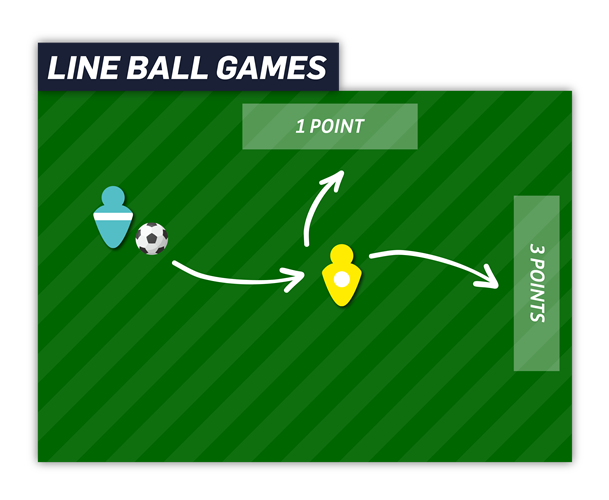
One directional game (possession)
Yellows vs blues and the aim of the game is to keep possession of the ball until you can attack the end line and stop the ball on the line.
Rules such as stopping on the line or dribbling over the line can be used. To make this multi-directional, once the team scores on one line they can attack the opposite line to encourage maintaining possession and changing direction.
You might play this as a warm-up game for goalkeepers where they can throw and catch the ball to get it to an end line, continuing to play until the ball is overturned.
Multiplayer group practice
This may be used as a warm-up or skills-based session. You can use a ball or no ball for the players on the outside of the area.
This example helps players work on trying to dodge and avoid the defenders in the middle whilst trying to get across to the opposite line.
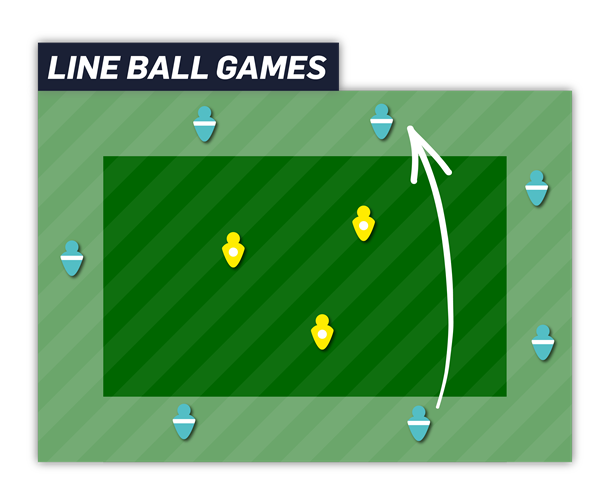
Where do line ball games fit in the bigger picture?
Above would be an example of how a ‘line ball’ game fits into the bigger picture. If you are working with adults, for example, you may wish to use the above practice as a warmup game or to paint some pictures of certain desired passing and movement. This would be an example of working with units (midfield) using a line ball practice which might then move into a small-sided game once some examples of patterns have been demonstrated.
So, the practice might look like this: 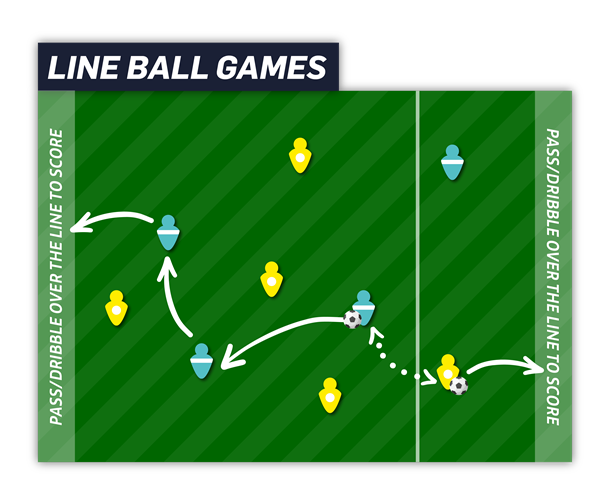
When you do not have goals to work with or have limited space, but want to work on specific movements, this may be a good practice.
Negatives of / things you don’t get from line ball games include:
- The realism of linking full units.
- The craft of scoring or striking into an end target such as e.g., goal.
- Players may find it difficult to connect to the bigger picture e.g., 11 vs 11 if done for too long and too often (unless you play within a small format game).
- It is physically intense with short-sharp work and can make players tired.
What do you think of Sarah’s blog? Have you used line ball games in your coaching? If so, how have you used them? Comment below!



